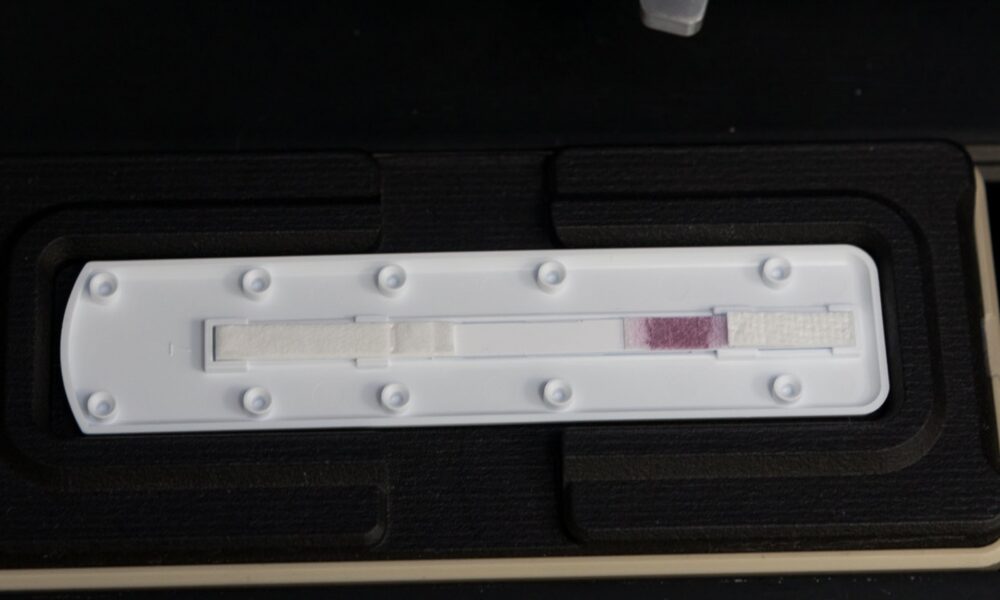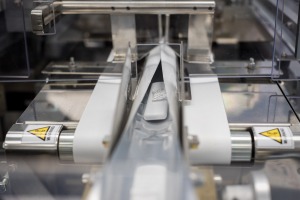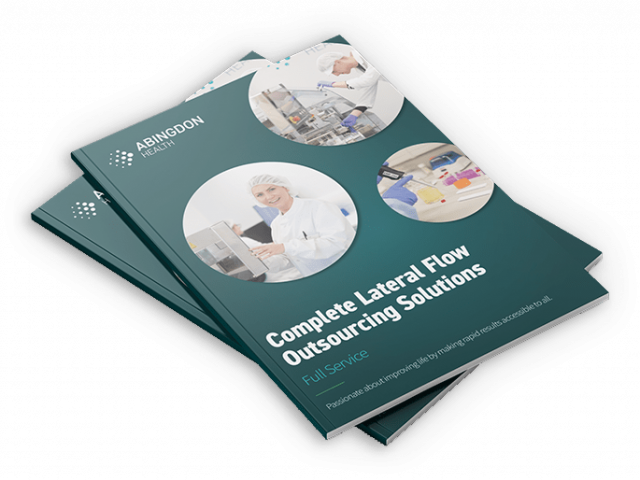Conjugation Challenges During R&D and Scale-Up to Reliable Manufacture

The Challenges
Future Manufacturability
Key Take-Away
As discussed in many of our articles, the process of lateral flow development is complex and requires experience. In addition to our own capabilities we also call upon external expertise. Therefore in this article, our partner, Fleet Bioprocessing, discusses the challenges of lateral flow conjugation and what is required during R&D and scale-up to ensure reliable manufacture.
The Challenges
As a CRO/CMO of over 20 years, we’ve developed reliable and reproducible conjugates for a diverse range of customers from diagnostic, pharmaceutical, military and veterinary sectors and from university spinouts to global industry players. This wide customer base comes with an equally wide range of conjugate performance demands. This provides rewarding day-to-day variation for our chemists but presents its own set of challenges.
Before we venture forth into the lab to visit conjugation challenges during R&D, let’s take a moment to consider what challenges we’ve already conquered, perhaps without even realising.
Whilst customer demands can be challenging, we have learnt to be flexible and responsive to meet these. We often find that there are commonalities that we can draw on in our projects day-to-day. Importantly, from the conception of a project, the customer’s requirements are at the forefront; understanding the customer’s specific goals can sometimes be a challenge, but one that is crucial to ultimate success of the project. Budgetary constraints can sometime present an additional challenge, but we can flip this to a positive that helps to define the scope of the R&D program and focuses the available resource on the most important outcomes for the customer. A development proposal for a conjugate supporting a one-off university research study will look very different to one intended for routine GMP production over many years to support a highly-regulated diagnostic product! For the rest of this article let’s stick with the latter example as it requires a more rigorous approach.
Long before we enter the lab, we will have been asking questions about the likely future scale requirements, the presentation of the material to be conjugated, the level of target incorporation required, etc. The answers to these questions allow us to design development proposals incorporating appropriate conjugation chemistries, purification approaches and optimisation study designs.
Future Manufacturability
 Critically we will be considering future manufacturability and process robustness from the very start of the project. It might be tempting to think that manufacturability does not need to be considered until the R&D phase has been completed, but decades of experience have taught us otherwise. We will only base our initial proposals on conjugation and purification approaches which we know are robust and scalable – and as we approach routine production, we will propose carrying out the right process robustness studies to prove that this is the case and (where required) to support regulatory submissions.
Critically we will be considering future manufacturability and process robustness from the very start of the project. It might be tempting to think that manufacturability does not need to be considered until the R&D phase has been completed, but decades of experience have taught us otherwise. We will only base our initial proposals on conjugation and purification approaches which we know are robust and scalable – and as we approach routine production, we will propose carrying out the right process robustness studies to prove that this is the case and (where required) to support regulatory submissions.
Thinking about future manufacturability leads us naturally into consideration of process transfer requirements. Sometimes we are developing conjugations for which we will also be the manufacturer – therefore transfer only needs to happen within our own company. For us, this makes life easy; R&D and GMP manufacture are intrinsically intertwined at Fleet Bioprocessing, and one is considered a natural continuation of the other, therefore there will be no nasty surprises as we go from R&D into production. We have learnt that we need to be more careful to ask the right questions when we are developing a conjugation to be carried out long-term by the customer or a third party, who may have different equipment or standard procedures to ourselves – another factor that needs to be considered in the project design. Obviously, the more access we have to the final manufacturing group during development, the smoother we can make the transfer. Sometimes we must work hard to convince our customers that this is important – it’s all too common that R&D and manufacturing departments (even those that may be physically close and form part of the same company!) have an arduous and clunky transfer process, lacking a close-knit relationship from early R&D all the way through to routine manufacture. Under these circumstances we have to work harder to avoid unwelcome surprises when the process is transferred!
Everything we have discussed so far can be considered at the project proposal stage, before we have even carried out a single experiment. Once we are in the lab, if we had to choose the biggest or most common challenge for R&D conjugations, it would be the conjugation scale! At the start of a project, we will often wish to examine a large number of reaction conditions, requiring us to choose a small-scale high-throughput approach. At this stage the conjugation scale may also be limited by availability or cost of critical reagents, so we’re often carrying out the initial studies at too small a scale to realistically resemble future manufacture. For example, although the basic chemistry may be scalable, we may be using a small, disposable spin cartridge for purification rather than a metre-long size exclusion column which might end up supporting full-scale production in the factory! And even something as simple as the concentration of the starting material for conjugation can be critically important – due to kinetic factors applying exactly the same conjugation chemistry to the same antibody at 0.1 mg/ml and 10 mg/ml will give very different results!
Therefore, as soon as we have narrowed down to a lead conjugation process – still during early R&D – we will be turning it into something fully scalable as quickly as we can. Similarly, scale will be considered carefully in the robustness studies described above. If instead these are afterthoughts to an R&D program, then one might find after significant development that the process is not robust at manufacturing scale, and that a lot of that effort in R&D has been wasted.
Key Take-Away
There are two main take-aways from this article. The first is that gaining as full as possible an understanding of the customer’s needs is a critical success factor that needs to be considered long before lab work begins. Then once we are optimising conjugation conditions in the lab, it all comes back to conjugation scale. Performing conjugation experiments at the right scale means that they can be shown to be repeatable, the results reproducible and the process scalable and robust. And with this approach, the challenge of meeting our customers’ requirements is being met head on!

